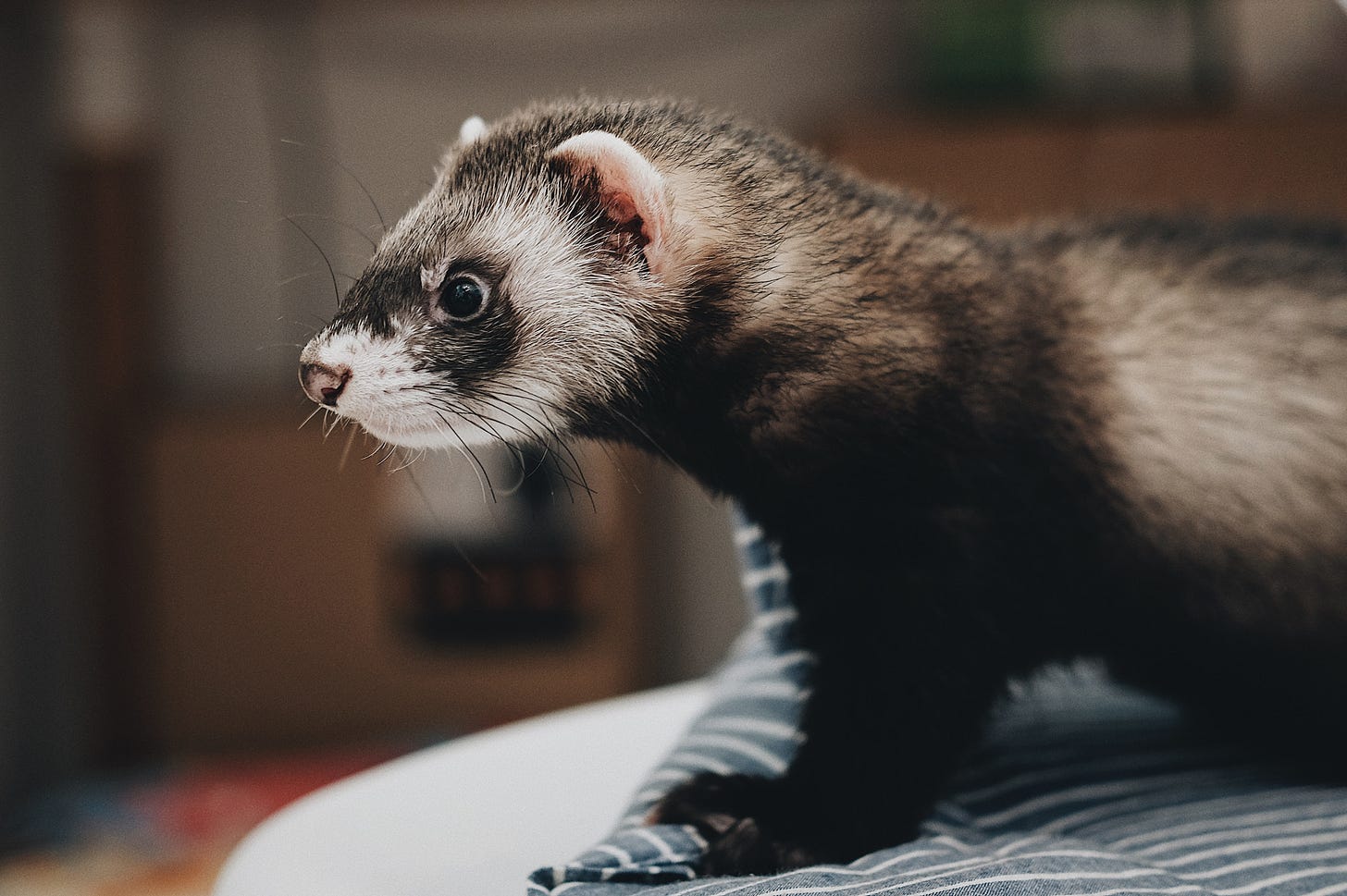Saving the Black-Footed Ferret: Preserving Grassland Ecosystem
Understanding the Challenges and Conservation Efforts to Protect a Keystone Species and Its Habitat

What is the black-footed ferret?
The black-footed ferret, a captivating and highly endangered mammal in North America, is crucial in preserving the grassland ecosystem. Despite their significance, these predators face a precarious existence due to several factors, such as habitat loss, disease, and the declining numbers of their primary prey - prairie dogs, which comprise over 90% of their diet. The prairie dog population suffered a steep decline in the 20th century as farmers and ranchers, backed by the government, eliminated them because their subterranean complexes were harmful to fields. This eradication led to the near extinction of the black-footed ferret, a species once widespread.
How long have they been endangered, and how does this affect our Planet?
In the early 1900s, the United States was home to as many as 5 million black-footed ferrets. Due to habitat fragmentation and the sharp decline of prairie dogs, their populations were feared to be extinct by the 1970s. Black-footed ferrets have faced various threats, including deliberate extermination, habitat conversion to cropland, and the deadly sylvatic plague, which has devastated the ferrets and their prey. The black-footed ferret is a flagship species, as its conservation can help protect many other crucial but lesser-known species. Being top predators, black-footed ferrets play a critical role in maintaining the ecosystem's balance and preventing overgrazing of the grasslands. The absence of black-footed ferrets due to the loss of their primary prey is a warning that the health of the grassland ecosystem is at risk. The decline of this keystone species indicates that we must take immediate action to protect the grasslands and the entire ecosystem it supports.
What are the barriers to protecting the Black-Footed Ferret, and how can we save them?
One of the biggest challenges facing black-footed ferrets is their low genetic diversity, which makes them more susceptible to disease and other threats. However, conservationists have made significant strides to protect the species from further harm. After being thought to be extinct in the wild, a small population was discovered in Wyoming in 1981, and since then, conservation efforts have helped to increase their numbers. For instance, in 1987, a captive breeding program was established for the black-footed ferret, and since then, habitat restoration and reintroduction efforts continue. Black-footed ferrets have been reintroduced to the wild in the United States and Mexico, including Wyoming, South Dakota, Montana, and Chihuahua. They have even been cloned! Especially the young ferrets, known as kits, are always put directly back into the borough where they were found.
Moreover, scientists have also used vaccines to protect the ferrets from future diseases and distemper. The black-footed ferret is also protected under the Endangered Species Act, which legally safeguards its habitat by conserving native grasses and restoring grassland ecosystems across the globe. We must continue to protect the black-footed ferrets and our planet. The genetic diversity of the grassland ecosystem is essential, and without black-footed ferrets, there is none. Their survival is crucial to their species and the health and well-being of the entire grassland and our planet.






